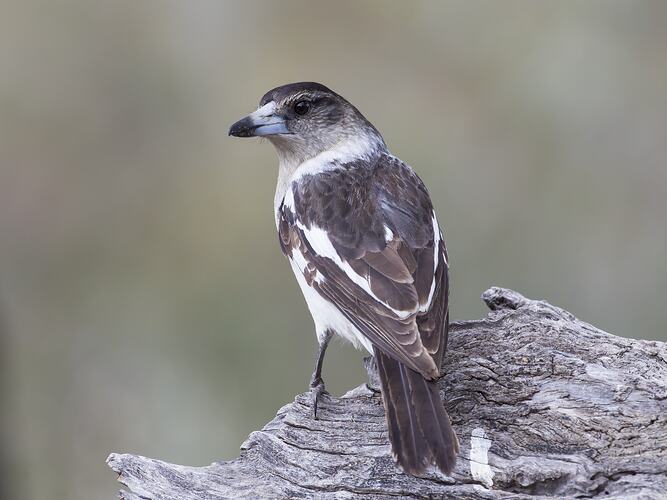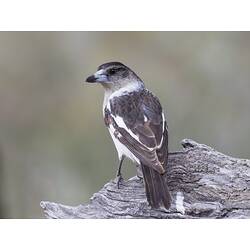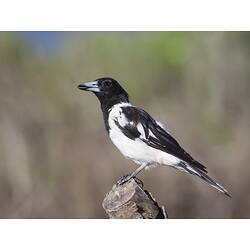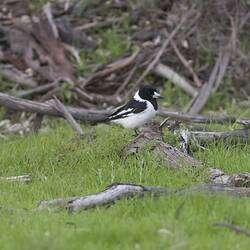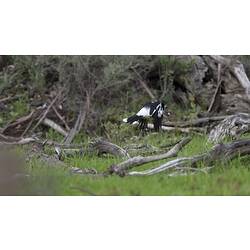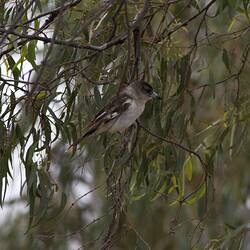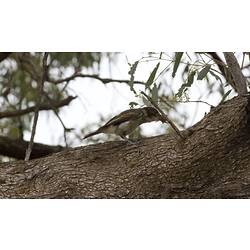General Description
A medium-sized black and white bird with a black hood, dark brown eye and a long, hooked, grey and black bill. It has a broad white collar around its neck, a black throat and black legs. The back is mostly black, with large patches of white on the wings and rump. Both sexes have identical plumage, but the male is slightly larger than the female. Juvenile birds are generally duller than the adults with more brown plumage instead of black. Body size up to 38 cm.
Biology
Pied Butcherbirds are aggressive feeders, preying on small reptiles, mammals, frogs and birds, as well as large insects. Most food is caught on the ground. The birds sit on an exposed perch and swoop down on their prey. Hunting groups may consist of several birds from a large group or may also hunt alone or in pairs. The breeding season varies throughout its large range. The female constructs the nest and incubates the eggs alone, and is fed by the male and other members of the group. The nest is a bowl of sticks and twigs, lined with grasses and other finer material. It is usually built in an upright tree fork up to 5 m above the ground. More than one female may lay eggs in the same nest. Often heard before it is seen, its song is a beautiful, melodious fluting, sometimes given in turn by several individuals.
Distribution
Across Australia.
Habitat
Drier forests and woodlands and often approaches parks and houses
More Information
-
Animal Type
-
Animal SubType
-
Brief Id
Medium-sized black and white bird, hooked grey and black bill, black throat.
-
Colours
Black, White, Grey
-
Maximum Size
38 cm
-
Habitats
-
Diet
Carnivore
-
Diet Categories
Reptiles, Frogs, Mammals, Birds, Insects
-
Endemicity
-
Commercial
No
-
Conservation Statuses
CITES: Not listed, FFG Threatened List: Not listed, EPBC Act 1999: Not listed, IUCN Red List: Least Concern
-
Taxon Name
-
Common Name
Pied Butcherbird
-
Kingdom
-
Phylum
-
Subphylum
-
Class
-
Order
-
Family
-
Genus
-
Species Name
nigrogularis
